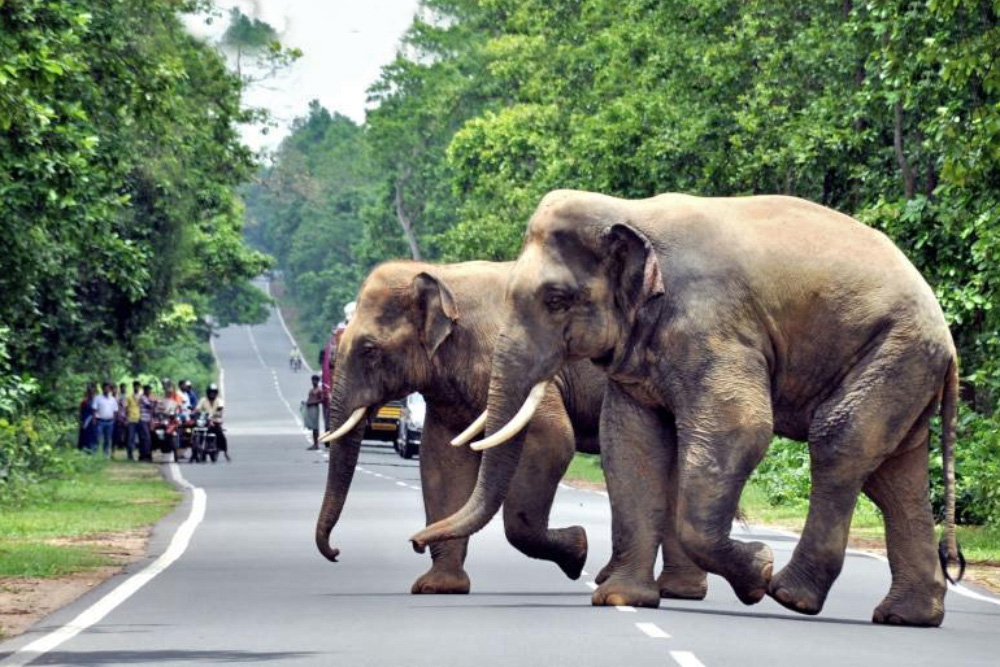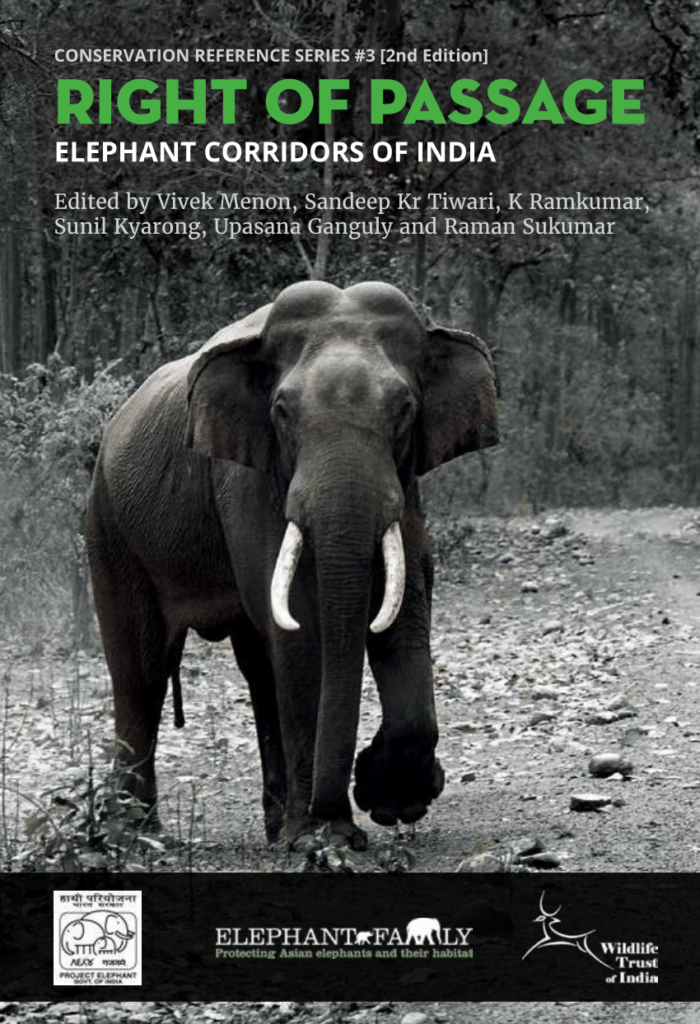Humans and elephants have been co-existing for thousands of years. The respect that humans bestowed towards the elephants can be seen through the rock paintings at Bhimbetka, seals and inscriptions of Harappa , rock carvings and sculptures at various ancient Indian temples and importantly on the Lion Capital at Sarnath- which is now the emblem of India. Thus, humans considered elephants as quite important animals and revered and worshipped them. True, that even back in the past, human elephant conflict was prevalent and we did devise solutions to reduce these interactions as much as possible.

At the present day, the conflict humans face with the elephants are not entirely novel. Some problems require traditional methods while some need our technological prowess to find a middle path. The ultimate aim however remains the same- the co-existence of us and the elephants: ensuring sustenance of healthy interacting populations of the elephants. The solutions hence combine both traditional and modern methods:
Acoustic and Visual Mechanisms
Traditionally, farmers sit on a machaan – a raised wooden platform in their agriculture fields and upon seeing the arrival of elephants, they use acoustic methods like shouting, banging objects, or visual methods like lighting fire torches or firecrackers to deter elephants from entering the fields. Also, now-a-days solar powered lights are used to prevent elephants from entering fields. High tech acoustic systems are used, but are not much effective over long term as elephants get habituated to the sounds.
However, using acoustic and visual methods are one the best solutions as it does not involve harming the animal in any way while ensuring protection of the agriculture fields and also safeguarding human lives. This forms a part of the various short-term human-elephant conflict prevention methods.
Fences and Barriers
Natural fences like cacti and agave plants are used in certain regions. Also, fences laden with chili and tobacco are used to deter elephants from entering the fields. These are very effective methods on a short-term basis. Fences using wires are also constructed, but elephants are able to break through them easily and hence, application of these wired fences is very site specific. Another tech driven method is the use of solar fences. These electric fences are powered by solar panels and if any animal touches it, the fences give a very slight electric shock to the animal. This way, the animal learns to avoid such areas and this method works effectively for elephants.
The electric shock is very slight and not much harm happens to the elephants. However, it is important that the barriers are designed properly and placed only where they are extremely needed. Placing barriers for preventing elephants from crossing roads or railway tracks is never going to work. Barring the high cost of maintenance, fences are very effective in conflict mitigation. Help by the government for establishment and maintenance of these fences can go a long way in helping farmers in conflict prone areas. Biofencing has been fairly successful in Assam in mitigating human elephant conflict.
Early Warning and Detection Systems
These systems include the use of remote sensing for detection of elephant herds and for monitoring their movements. This is a high-cost technology driven method that uses infrared cameras for detecting elephant herds; or using equipment to monitor infrasonic calls that elephants use for communication. The data collected from this is then passed on to the people that are at the interface of human-elephant interactions. Wildlife SoS is working on early detection systems in Chhattisgarh to mitigate HEC using this method.
Also, simple elephant presence data communication between people using a mobile phone fall under this category. The use of laser beams for detection of elephants crossing along a railway line is fairly effective. Using flash light systems, the elephants are either driven out temporarily if a train is to pass or using GPS, the train driver is informed about the presence of elephants. This method ensures that the elephants are not killed due to crashes with trains. The drawbacks of this method are the requirement of internet connectivity, which becomes a problem in remote areas and the high-cost of establishment and maintenance. Software have a major role in making such systems available and inclusive to those affected most by HEC.
Safeguarding Elephant Corridors
The best way of reducing human-elephant conflict is to ensure that a suitable habitat is available to the elephants. The development of linear infrastructure has already fragmented much of the ancient elephant habitats, propagating conflict significantly. This will prevent the elephants from straying away in search of food and water; which they do due to the degradation of their natural habitat. This can be done by the establishment of Protected Areas, even though this is not the only effective method.
Since animals understand no political boundaries, protecting elephants and managing them at a suitable natural habitat, outside a Protected Area is challenging. But if proper habitats are available, the instances of extreme human-elephant conflict will be drastically reduced. Also, for maintaining a healthy population of elephants, wildlife corridors connecting habitat patches need to be maintained. This will ensure that a huge animal like elephant, having large territories move freely and breeding happens between populations. This is needed for gene exchange between populations- to prevent inbreeding. Particularly, there is the need to conserve grasslands, a neglected habitat which elephants rely on.
Wildlife Trust of India is doing great work in establishing elephant corridors, particularly in the Western Ghats.

Changing Human Attitudes towards Elephants
How people think about an animal depends upon the kind of interaction they have with that animal. For farmers at an elephant conflict prone area, elephants are the most undesirable beasts. For people at religious places, elephants become gods; and for people in cities, not enough is being done for elephant conservation. In such a complex scenario, understanding the situation of the other side and practically knowing what solutions are actually possible is the best way in. Criticizing a group of people without understanding the ground realities is actually moving away from effective solutions. Livelihood, spirituality and conservation should go hand in hand.
However, a single common thread having no divergence is ethics. For a farmer, understanding that an elephant is just driven by its natural requirements towards a farm will reduce cruelty, if at all inflicted towards the animal. For religious purposes, going with the biology of the animal is surely an ethical way to ensure its sustenance. And for people with true conservation morale, ethics is understanding that people at the interface of human-elephant conflict need to live too.
Financial incentives, such as wildlife tourism and trophy hunting can also encourage tolerance for elephants. Furthermore, elephant dung is becoming a popular source of income for rural households. Changing human attitudes is also essential in improving the plight of India’s temple elephants.
Compensation and Government Aid
For people who have suffered crop losses, or have lost lives due to conflict with elephants, suitable compensation by the government will not only ensure that they are financially supported after their loss, but will help in the establishment of a belief that there are people working for them and their problems. The hatred that they may have for the animal actually reduces. Also, government aid for establishment and maintenance of mitigation structures is one of the long-term faith establishment as well as conflict reduction mechanism.
With the ever-growing population of humans, co-existence with other animals is getting tougher, but not entirely impossible. The way each individual think and how much are they aware is the binding part. Just the way elephants were revered in the past, they need to be revered in the present and the future too. The solutions to the human-elephant conflict are very site specific and how much the people are ready to work on them is on what the survival of the elephants depend. Centre of Wildlife Studies’ Wild Seve Project aims on making compensation schemes more efficient through technology.
Written by: Vaishnavi Apte
Help us Help Them! Think Wildlife Foundation is a non profit organization with various conservation initiatives. Our most prominent campaign is our Caring for Pari intiative. Pari is a rehabilitated elephant at the Wildlife SoS Hospital. 25% of the profits from our store are donated to the elephant hospital for Pari. Other than buying our wonderful merchandise, you could donate directly to our Caring For Pari fundraiser.
References
1. Shaffer et al. (2019), Human-Elephant Conflict: A Review of Current Management Strategies and Future Directions, frontiers in Ecology and Evolution
2. Janaki Lenin (2011), Human- Elephant Conflict, Conservation India
3. Niharika (2021), Depiction of Elephants in Indian Art, Journal of History, Art and Archaeology
4. Human- Elephant Conflict, IUCN
